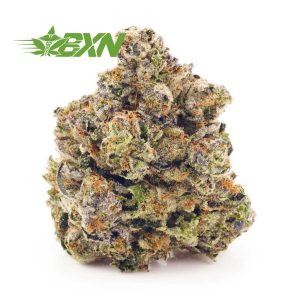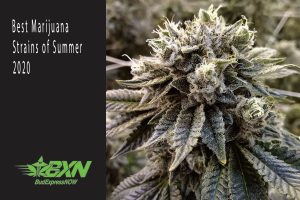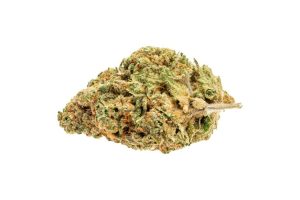When it comes to weed, you might have heard of the different ways they can be grown. Namely, in greenhouses or outdoor.
Because there are advantages and disadvantages to each, it’s useful to know the difference between the two—and this knowledge comes in handy whether you’re on the growing side or the consuming side.
Let’s first compare greenhouse cannabis farming vs. outdoor cannabis farming.
Greenhouse vs. Outdoor Farming vs. Indoor Farming
If we’re talking about the quality of the weed, greenhouse vs. outdoor quality hinges on a few factors.
Outdoor farming
Let’s start with outdoor farming. Outdoor cannabis farms are, as you might imagine, at the mercy of the weather. Even if you’re in a weed farm-friendly area like British Columbia, you still never know what the weather will bring you (not to mention fall and winter times aren’t the best for growing cannabis).
For people who like their weed dense, outdoor-grown cannabis may not be the best option because there are no restrictions whatsoever in terms of their growth. For example, like flowers that grow toward the sun, so do cannabis plants—they grow upward and stretch, and because they’re in an outdoor environment, there are absolutely no constraints to how far upward they can stretch. Let’s just say you won’t get dense bud this way.
If you’re a grower, the perks of outdoor-grown weed are many. Firstly, it’s much cheaper—you won’t need to spend a fortune on lights and retrofitting large buildings to house your weed. It’s also much better for the environment—powering greenhouses and indoor grows is a huge strain on our natural resources and will continue to be, until we find more environmentally friendly lighting options. And of course, if all other weather conditions are perfect, there’s nothing quite like 100% natural sunshine to help your crops grow.
Ultimately, for most mainstream consumers out there, the difference between indoor and outdoor plants will come down to this: price. That being said, there are licensed producers out there (like Harvest One) that are focused on high-quality outdoor grow, so if you’re a consumer who loves truly all-natural cannabis, don’t worry, there are still premium outdoor options for you. And if you’re wondering about how to make outdoor look like indoor, a good place to start is to simply take more care with the trim jobs—make them as neat and clean as possible.
Indoor farming
Now let’s look at indoor strains. It used to be that “indoor” was associated with illegal grow-ops set up in sketchy houses in your local neighbourhood. That’s changed.
Because indoor setups tend to be much smaller than, say, a giant outdoor farm, it’s easier to track and keep your plants happy. You can make smaller, more precise adjustments to conditions like lighting, humidity, and so on. And all of these factors give growers the power to really control every aspect of their cannabis. From flavour to colour to shape to potency, it’s much easier to control for the specific kind of weed you want to create.
Another result of these smaller, more contained operations is that workers can spend more time and pay more attention to their trim jobs. As with anything in life, perfection is impossible, but when you can have this level of precision, it’s much easier to achieve consistent quality. And that’s what indoor cannabis plants represent.
This is the main reason that most long-time cannabis users who have more discerning tastes will lean toward indoor cannabis. Sure, the prices are usually higher, but you get what you pay for—more consistent quality, more cleanly trimmed bud, less risk of bad weather ruining the crop… however, natural sunlight is still the best when it comes to making plants grow. Quickly. Yields are much higher with outdoor grows when the conditions are right. Other than that, another downside of indoor cannabis is that you’re more likely to have to use pesticides and other chemicals to protect your plants.
Greenhouse cannabis
But there’s a third option left: greenhouse cannabis. If you’re wondering “is greenhouse indoor or outdoor,” well, the answer is somewhere in between. It has the advantages of natural sunlight since greenhouses are constructed to allow sunlight through, but the greenhouses must also be customized with blinds and lighting for truly optimal conditions.
But because greenhouses have the advantage of natural sunlight, if you’re a grower and you live in a sunny region, you’re laughing because you’re already saving a significant amount of money on electricity. Like with indoor grows, your plants are protected from forceful winds, frost, and heavy rains. And if you’re taking the necessary precautions (like building supports and using netting to make sure your plants are reaching upward instead of sinking into each other—the more airflow, the better), even better.
And obviously, regardless of if you’re growing outdoors or indoors, avoid using pesticides and try to keep your plants safe from mildew.
Done right, greenhouse cannabis plants can be just potent as indoor grows, and yield amounts comparable to the outdoor grows out there.
The Best Strains to Grow in a Greenhouse
Some of the best strains of weed if you have the capital and resources to invest in a greenhouse might include Jack Flash, Tahoe OG, and Northern Lights. Because greenhouses and indoor grows are particularly susceptible to annoying pests and mold, these strains are good options because they’re resistant to these—plus, they tend to be rather big plants (which is one thing that people like about outdoor grows).
Best Strains to Grow Outside
The best cannabis strains to grow outside include strains like Sour Diesel, Killer Queen, and Critical Mass because these plants tend to grow in great quantities (while still being super potent)—and they’re relatively low maintenance, which is preferable regardless of where your plants are growing. But this is especially valuable in outdoor grows because it means they can resist mild bouts of bad weather pretty well and eat up the natural sunlight.









